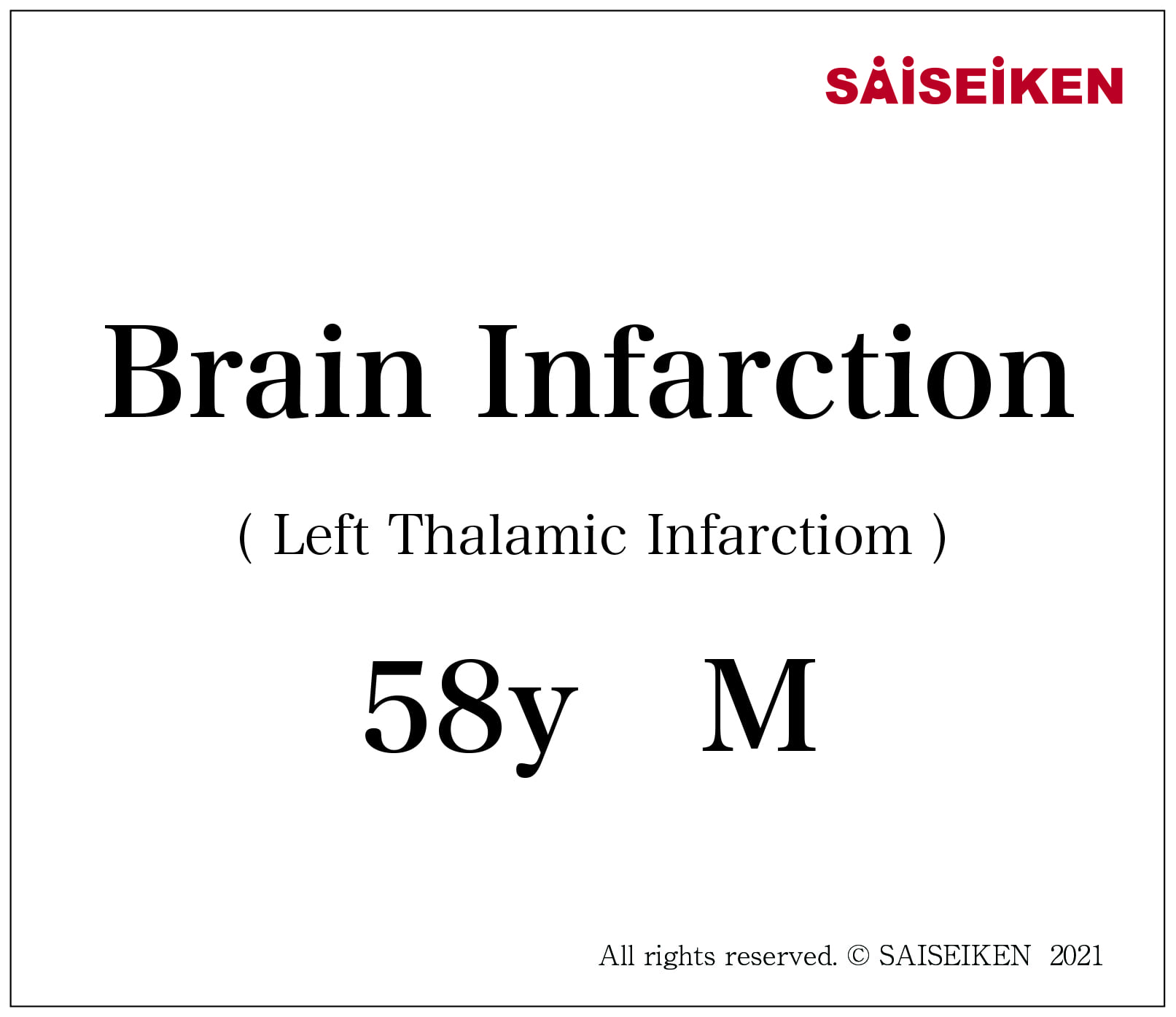Basic Research
- Stroke
Regenerative therapy using stem cell has been thought to be is a promising approach for the treatment of stroke.
We investigated the effect of SHEDCM on permanent middle cerebral artery occlusion (MCAO) animal.
Adult male Sprangue-Dawley rats were subjected to MCAO. SHEDCM were then administrated transnasally , and the motor function and infract volume were evaluated.
The SHEDCM group had more positive signals than the DMEM group ( Control).
The two group SHEDCM and DMEM displayed almost the high score for motor function in the early stage.
Differences in score appeared gradually between the two groups during the middle stage. In late stage progressive improvement in motor disability became significant in the SHEDCM group compared with that in the DMEM group.
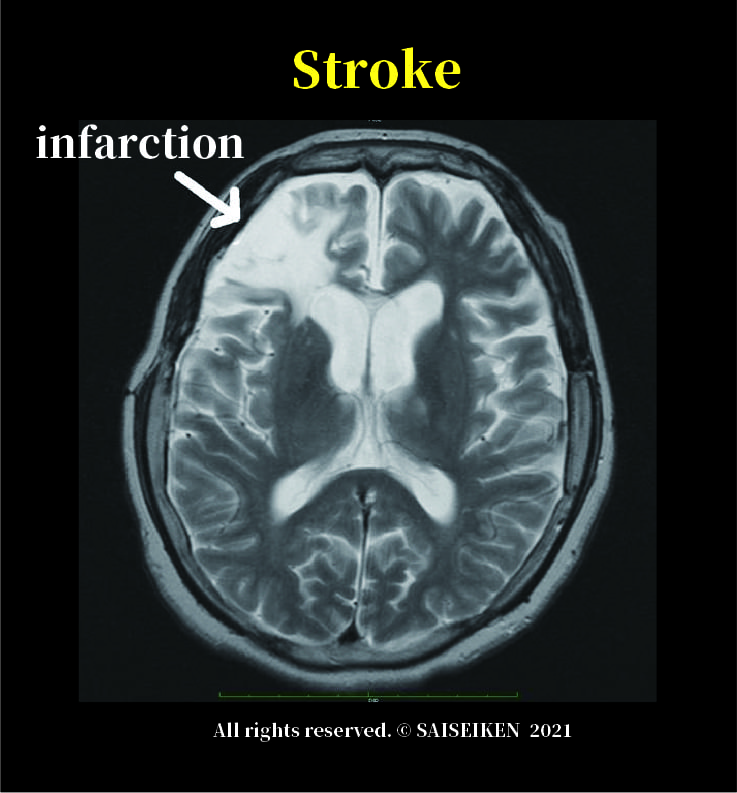
As shown in next figure, there was a significant decrease in the infarct volume on day 16 in SHEDCM group compared with the BMMSCCM and DMEM group. These results suggest that SHEDCM promote regeneration.

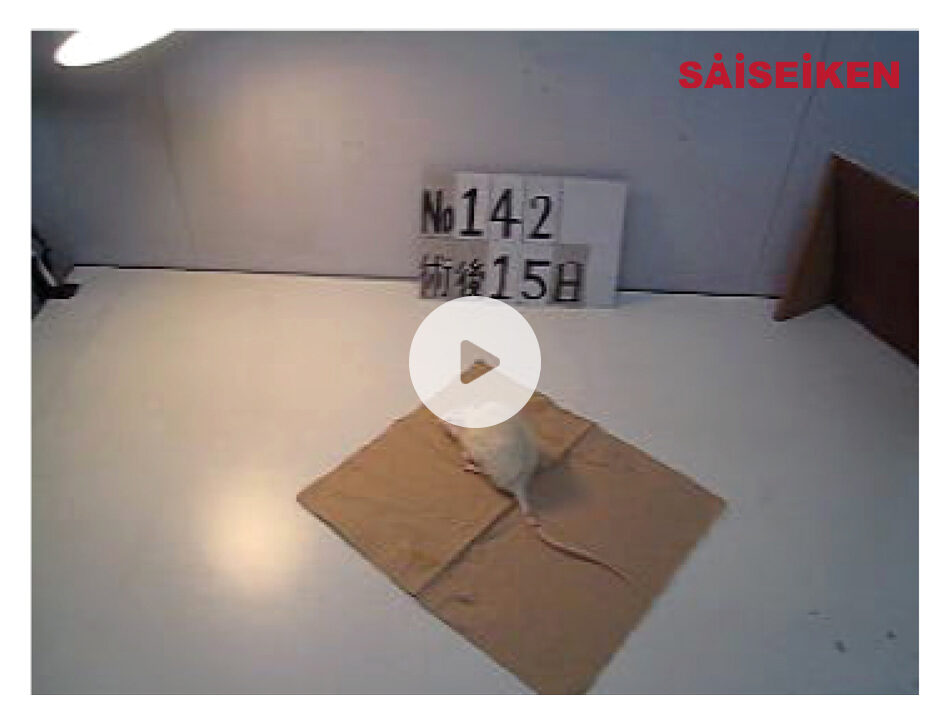
DMEM
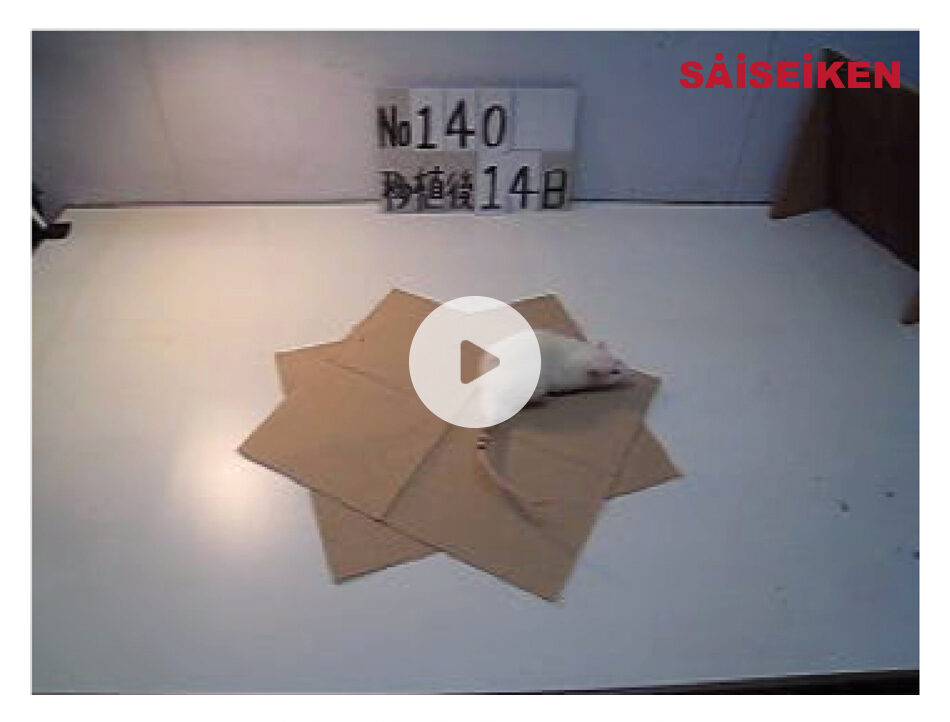
SHED-CM

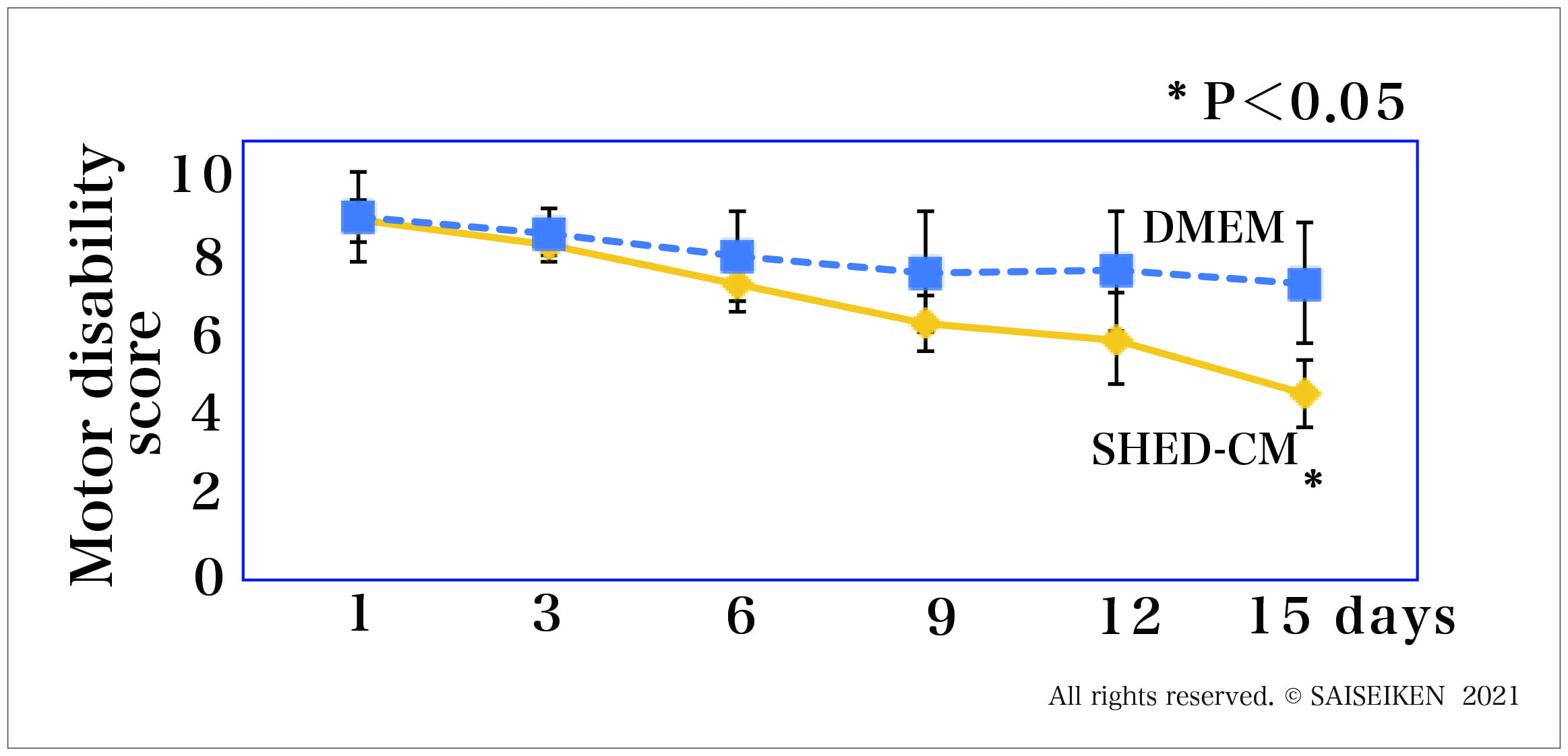
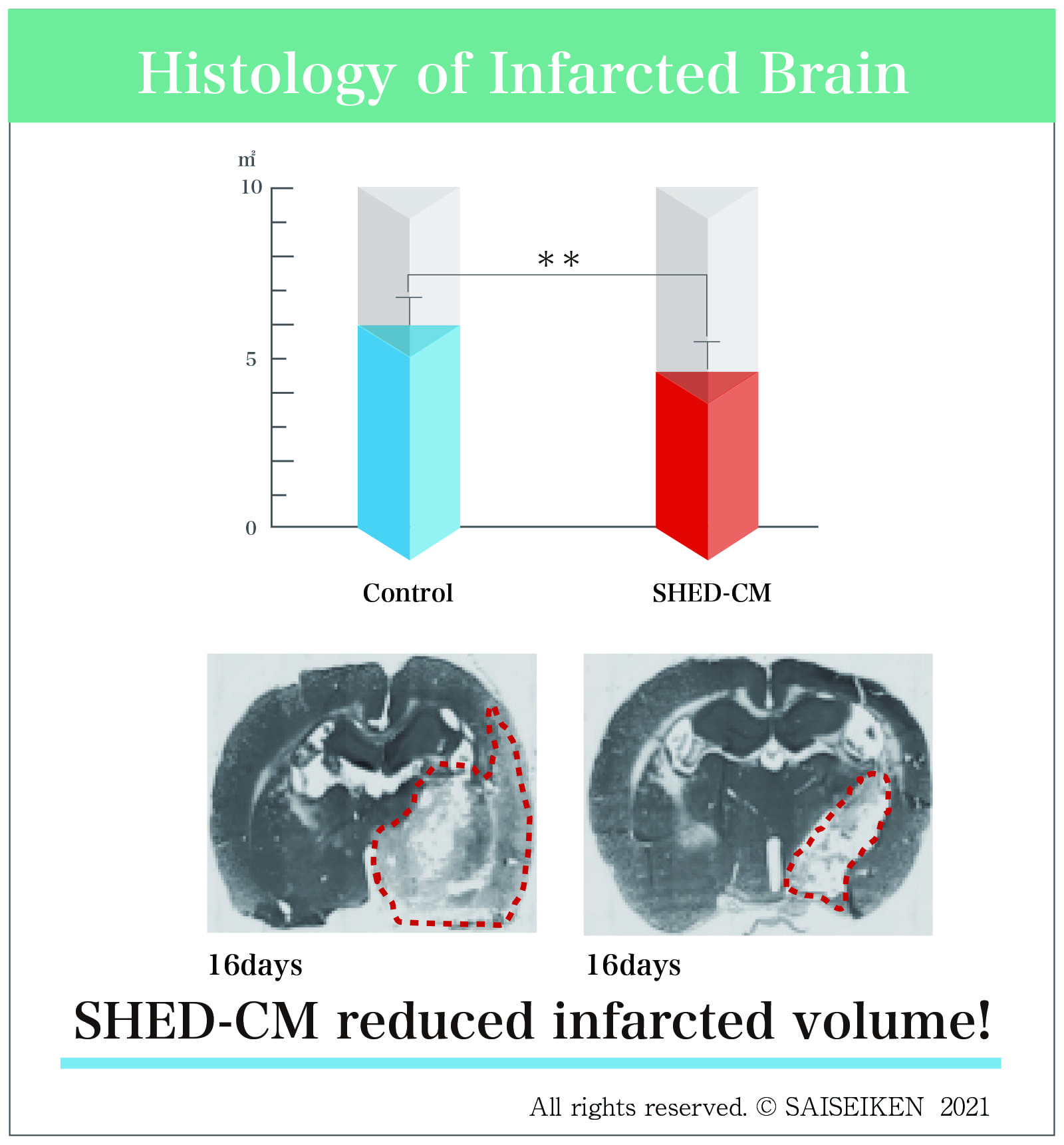
(Inoue,T.Et al.: Stem cell from human exfolis\ated decidupus tooth-derived conditioned medium enhance recovery of focal cerebral ischemia I rats. Tissue Engineering:part A 19:1 and 2, 2013.)
For brain infarct, we will show you a video that shoes SHEDCM is administrated to a patient with brain infarct who was 58-year-old male..
The SHEDCM was administrated to the brain from 20days after the attack to 90days using a nasal drip pump that is a tool uniquely developed. I will explain its mechanism, later , just for now, please imagine the SHEDCM is directly administrated to the brain of the human through the back side of the nose. This is very important in such an acute or subacute cases. The SHEDCM has several administration method, which means it can be administrated in a much easier, safer and more painless way compared to the normal stem cell therapy. This is the biggest feature of the SHEDCM.
